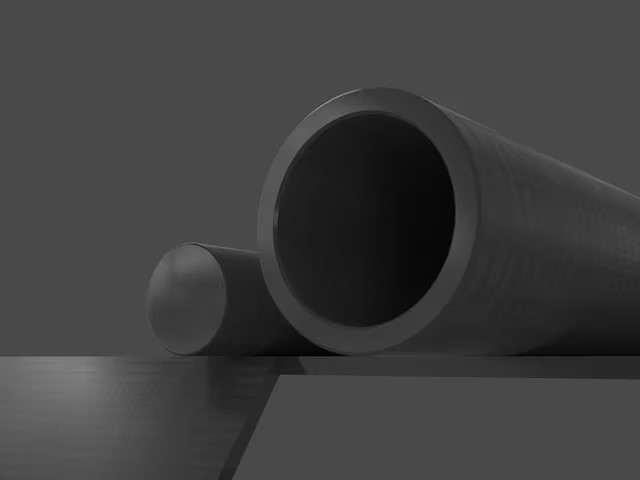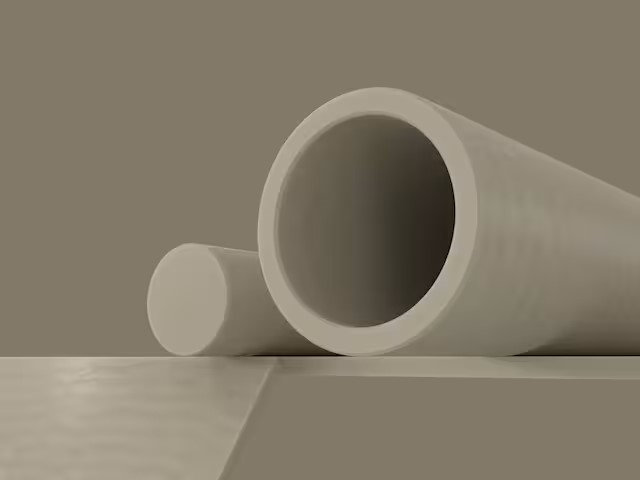When comparing carbon-filled PEEK and glass-filled PEEK, both materials offer unique advantages tailored to specific applications. Understanding their strengths can help in selecting the right material for a given use case. Below is a detailed overview of each type, followed by a comparison table.

Advantages of Carbon-Filled PEEK
Mechanical Strength:
Higher Tensile and Compressive Strength: Carbon-filled PEEK exhibits significantly greater tensile strength and stiffness than glass-filled PEEK, making it suitable for high-load applications.
Wear Resistance:
Superior Abrasion Resistance: The carbon fibers enhance wear resistance, making it ideal for components subjected to friction, such as gears and bearings.
Thermal Properties:
Improved Thermal Conductivity: Carbon-filled PEEK has better thermal conductivity, allowing for uniform temperature distribution and reducing thermal hotspots.
Dimensional Stability:
Low Coefficient of Thermal Expansion: This ensures that carbon-filled PEEK maintains its shape under varying temperatures, which is crucial for precision applications.
Electrical Properties:
Conductivity: Carbon-filled PEEK can provide enhanced electrical conductivity, beneficial in applications requiring static dissipation or grounding.
Environmental Resistance:
Excellent Moisture and UV Resistance: This makes carbon-filled PEEK suitable for outdoor applications where exposure to varying conditions is common.

Advantages of Glass-Filled PEEK
Increased Stiffness and Strength:
High Strength and Stiffness: Glass-filled PEEK significantly enhances the stiffness of the material compared to unfilled variants, making it ideal for structural applications that require stability.
Thermal Stability:
Excellent Thermal Stability: It maintains mechanical properties at high temperatures (up to 250°C or 482°F), making it suitable for demanding environments such as oil and gas industries.
Chemical Resistance:
Robust Chemical Resistance: Glass-filled PEEK is highly resistant to various chemicals, including acids and organic solvents, similar to standard PEEK.
Wear and Abrasion Resistance:
Good Wear Resistance: While not as superior as carbon-filled variants, glass-filled PEEK still offers excellent wear resistance, making it suitable for many industrial applications.
Dimensional Stability:
Low Creep and Excellent Dimensional Stability: This property is beneficial in applications exposed to high static loads over long periods, ensuring consistent performance under stress.
Flame Retardant Properties:
Inherently Flame Retardant: Glass-filled PEEK produces minimal smoke and toxic fumes when exposed to fire, enhancing safety in critical applications.
Comparison Table
| Property | Carbon-Filled PEEK | Glass-Filled PEEK |
| Tensile Strength | Significantly higher | Moderate |
| Wear Resistance | Superior | Good |
| Thermal Conductivity | Enhanced | Lower |
| Dimensional Stability | Excellent Under Thermal Stress | Good But Less Stable |
| Chemical Resistance | High | Good |
| Moisture Resistance | Excellent | Moderate |
| Electrical Conductivity | Improved | Insulative |
| Flame Retardancy | Moderate | Excellent |
Conclusion
In summary, neither carbon-filled nor glass-filled PEEK is universally "better"; rather, they excel in different contexts based on their unique properties. Carbon-filled PEEK is ideal for applications requiring superior mechanical strength and thermal conductivity, while glass-filled PEEK offers enhanced stiffness and chemical resistance in environments where these attributes are critical. The choice between these two materials should be guided by the specific requirements of the application at hand.